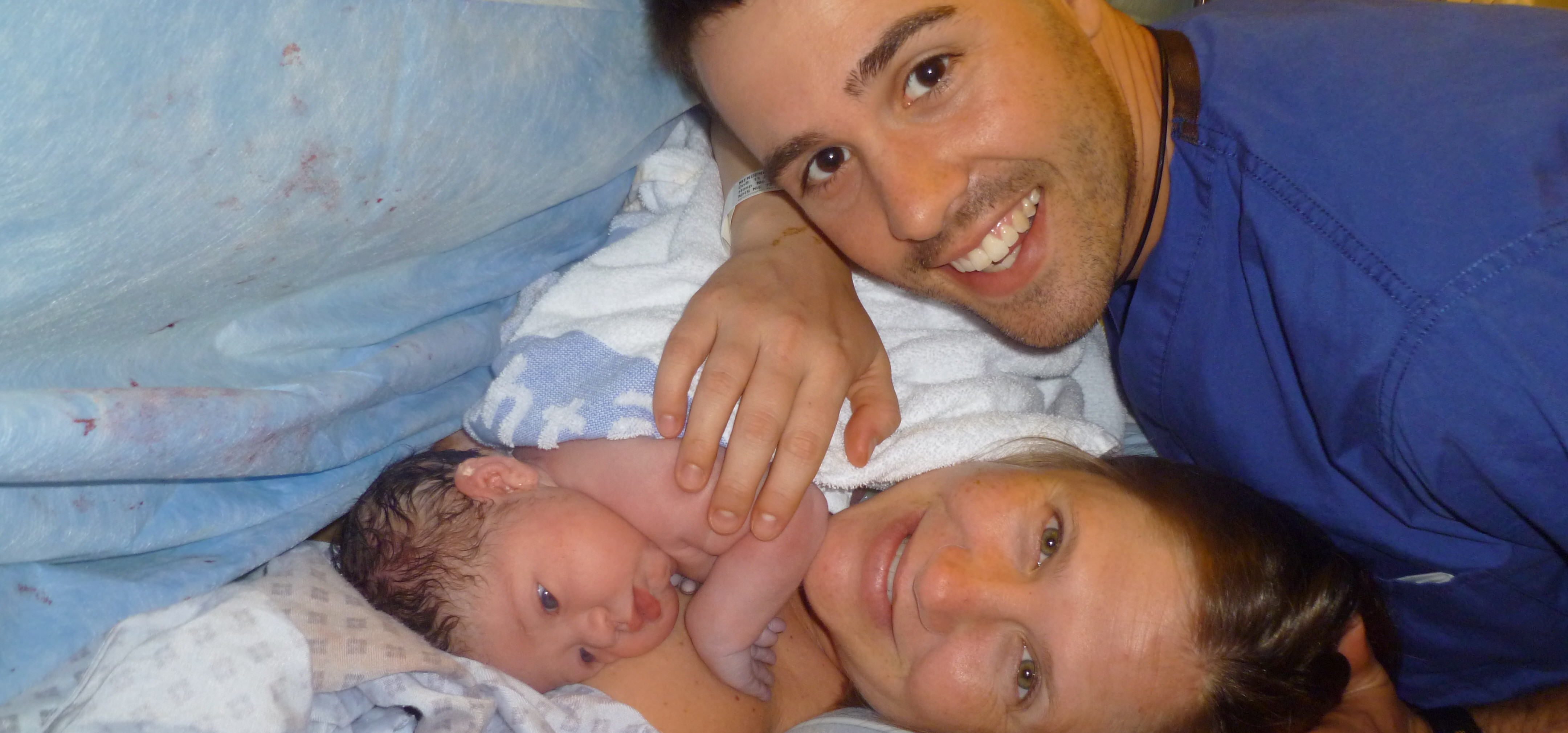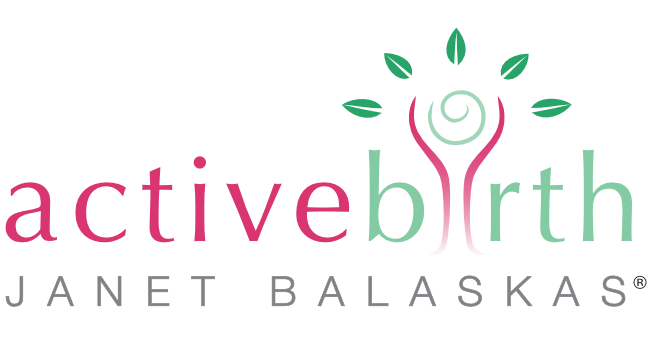
‘Natural Caesarean’ – Including Benefits of a Natural Birth
On our Active Birth Weekend Course we always inspire couples, where possible, to aim for a natural birth. A natural birth will give mother and baby the benefit of the ‘love’ hormones (oxytocin and endorphins) – these stimulate efficient contractions and also play a key role in ‘bonding’ after birth. As science is turning the microscope on birth, the latest findings show important long and short term health benefits of the baby’s exposure to the bacteria that populate the vaginal environment – just some of many reasons to aim to give birth naturally.

While the likelihood of a natural birth is high (80-90%), no one can predict what may happen. An unnecessary caesarean should always be avoided. However a caesarean can also be life saving, or reduce risk with a healthier and happier outcome in some circumstances. So it’s important to have an open mind – and reassuring to have a contingency plan. We always include a session on how the benefits of a gentle natural birth can be combined with medical interventions where necessary – including when the birth is by caesarean.
I recently received an email with this gorgeous picture from Emily Mendenhall – celebrating the first birthday of her daughter Fiona – who was born by caesarean section. Emily and her husband Adam came to the Active Birth Centre during the pregnancy and attended our antenatal classes and yoga classes.
Emily was determined to have a water birth, but was encouraged by my co-teacher Jill Miller to write a simple caesarean section birth plan ‘just in case’. Emily made a plan for what we call a ‘natural caesarean’. As she said in her email – ‘What a blessing it was in the end.’ Her experience inspired me to write about the process.
There is still the opportunity to have a calm and magical birth. Staying as close as possible to the physiological model of a natural birth will have great benefits
So what is a ‘natural caesarean’?
Many of the pregnant women I meet at the Active Birth Centre are worried that, if they need a caesarean, their baby will miss out on the benefits of a natural birth. It may sound like a contradication in terms, but there are many things you can do to have a more natural caesarean. There is still the opportunity to have a calm and magical birth. Staying as close as possible to the physiological model of a natural birth will have great benefits – especially in the first minutes and hour after the birth.
The ‘natural’ approach to caesarean section was developed by Professor Nick Fisk at Queen Charlotte’s and Chelsea Hospital. As Professor Fisk told the Guardian, “while couples having normal deliveries have been given more and more opportunities to be fully involved in childbirth, very little has been done to see how we could make the experience more meaningful for those having caesareans.”
I couldn’t agree with him more – w should do our best so that every birth is a wonderful and memorable experience for the parents and a gentle, safe birth for the baby. Caesarean birth today is a sophisticated and seamless life saving procedure, with excellent pain relief. I prefer that my clients understand how to have a positive, informed and empowered birth if they need to opt for a caesarean, rather than viewing this as a ‘worse case scenario’.
…we should do our best so that every birth is a wonderful and memorable experience for the parents and a gentle, safe birth for the baby.
Here are some of the features of a ‘natural’ caesarean:
- The birth of the baby can be carried out slowly and gently over several minutes so the parents can participate.
- In particular, the baby can be lifted out slowly – Professor Fisk calls this ‘walking the baby out’.
- If the cord is not cut immediately the baby will still be getting oxygen from the placenta so there is no need to rush.
- This slow approach is more like a vaginal birth – a slow calm entry into the world for the baby.
- The back of the bed can be raised a little and the screen lowered so the parents can be involved in the birth and see the baby’s head being born and then, gradually, the body.
- This gradual birth of the baby also allows the time for the chest to be squeezed on the way out similar to a vaginal birth and the lung fluids to clear spontaneously.
- The baby is placed straight onto the mother’s chest ‘skin-to-skin’, which helps to regulate the baby’s breathing. Here the baby can gradually acclimatise to being in the world safe and warm on the mother’s body, close to her familiar heartbeat.
- There is no rush to clamp and cut the cord, which can be left intact for a few minutes so baby can benefit from the placental transfusion.
- The placenta can be removed prior to the clamping/cutting of the cord and kept close to the baby for a little while.
Fiona Mendenhall-Koon was born on the 8th July 2013
One year on, Emily wrote this message to me:
“Your support and guidance during my pregnancy meant the world to me and – even though my birth experience wasn’t what I wished for – your teachings made a huge impact in making our birth experience the best it could be. We are thrilled with our happy, bubbly, talkative, joyful baby. There is truly nothing better.”
I am so delighted for them that their life as a family had such a positive start despite the change of plan– it truly was an Active Birth!
We’ll post Jill Miller’s Guide to making a ‘natural caesarean’ birth plan soon, which can be used for inspiration to create your own. It is important to know that if you do have good reasons to have a caesarean, there is quite a bit you can do to have a better experience, and gain some of the benefits of a natural birth.




Brilliant! Thank you, Janet Balaskas for all the groundbreaking work you do and have done.
I am so glad this birth went so well – in actual fact it was my personal birth plan that was shared through your active birth class. As a pregnancy yoga teacher myself and faced with dangerous medical condition that prevented my panned home birth it has become my mission as a teacher and a mum to share this wonderful way to help the medical teams remember that sections are still births and should be performed with respect to the mother and baby 🙂
Hi Janet
Having had one natural, two emergency c sections and one elective I think having a c section like this would be great . I have asked for aspects of this screen lowered skin to skin etc but it wasn’t done like described and I think there is a lot of work to do with the hospitals to achieve this shift . Nina
Pingback: Hypnobirthing C-Section- really?! | HypnoBirthdays